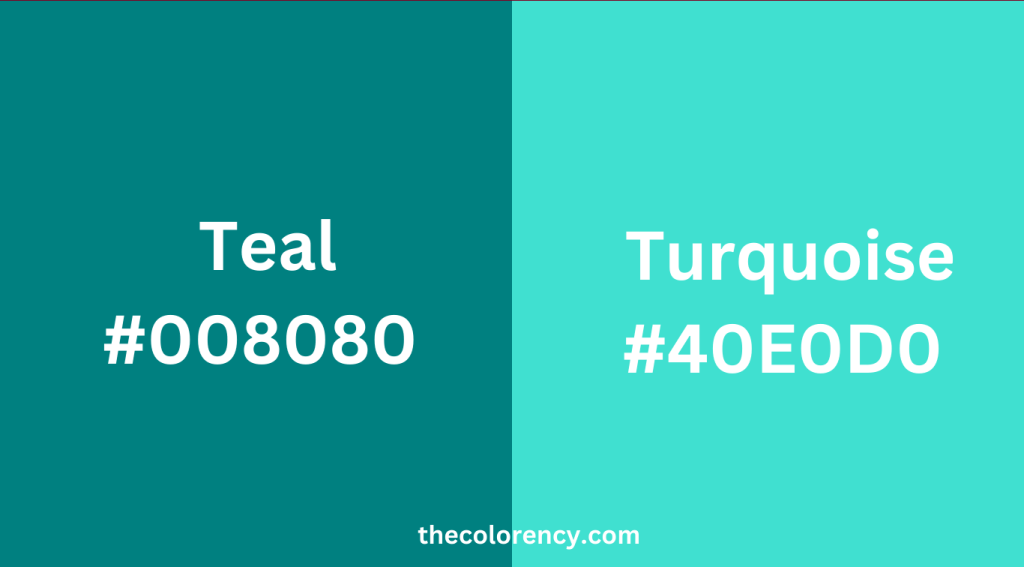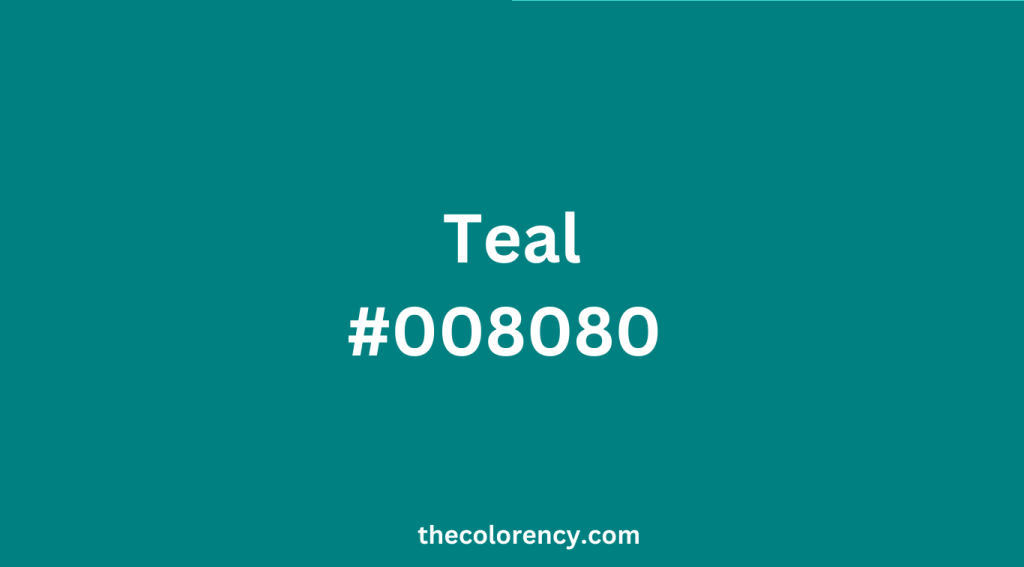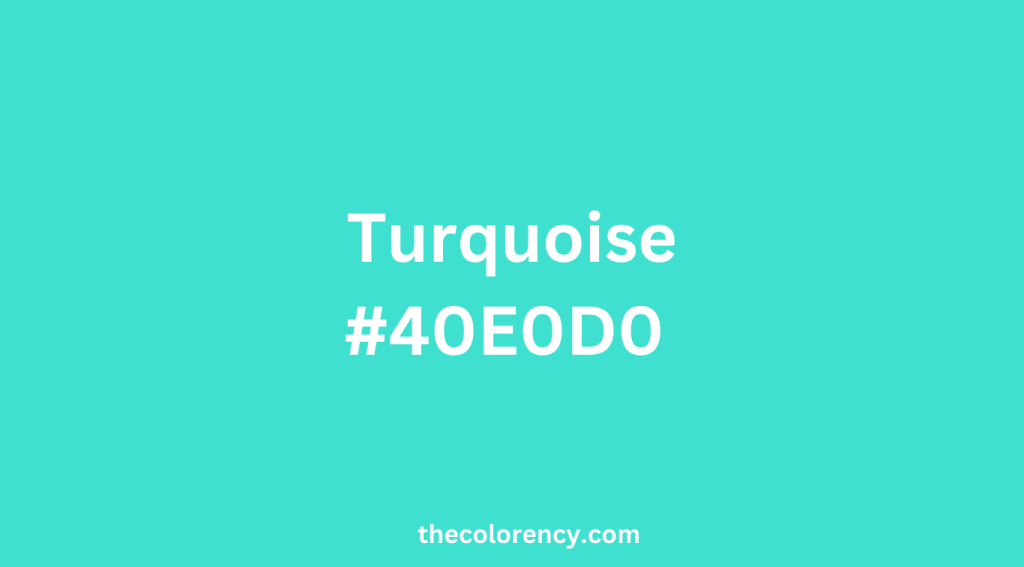
Teal and turquoise are often used interchangeably, but they are not the same color. While they share similarities, such as being a blend of blue and green, there are differences that set them apart. In this article, we will explain the details about ” teal vs turquoise ” and compare their RGB values, color differences, and shade comparison.
Teal Vs Turquoise: What’s the Different?

Base Color of Maroon and Burgundy
Teal and turquoise are two colors that belong to the blue-green spectrum, with teal having a higher proportion of blue than green, while turquoise has more green with a subtle touch of yellow.
Introduce Teal in One Sentence
Teal is a blue-green color that is often described as a mix of deep blue and green.
Introduce Turquoise in One Sentence
Turquoise is a blue-green color that is brighter and more vibrant than teal, with a hint of yellow.
Teal Vs Turquoise: Hex Codes & Rgb Values
Teal
Hex code: #008080
RGB values: 0, 128, 128
Turquoise
Hex code: #40E0D0
RGB values: 64, 224, 208
Teal Vs Turquoise: Where Does the Name Come From?
The names of teal and turquoise are both from natural materials.
Teal gets its name from the common teal, a type of duck that has a bluish-green stripe on its head. The color of this stripe is similar to the shade we now call teal.
People have named turquoise after the gemstone of the same name, which they have prized for its color and beauty for thousands of years. The gemstone is typically blue-green in color, with variations in shade and intensity.
Teal Vs Turquoise: Color Match

Teal and Turquoise both are versatile color that can be paired with a wide range of other colors to create different moods and aesthetics.
Color Match of Teal
Here are some color matches that work well with teal:
- White: Crisp and clean, white is a great color to pair with teal for a fresh and modern look.
- Gray: A neutral gray can balance out the boldness of teal, creating a sophisticated and calming vibe.
- Coral: For a fun and energetic look, pair teal with coral. The warm pinkish-orange hue of coral complements the cool blue-green of teal.
- Mustard: Teal also pairs well with mustard yellow, creating a warm and cozy vibe that’s perfect for fall.
- Navy blue: For a classic and timeless color combination, pair teal with navy blue. The deep blue color creates a strong contrast against the blue-green hue of teal.
Color Match of Turquoise
Here are some color matches that work well with turquoise:
- White: Pairing turquoise with white creates a fresh and clean look that feels light and airy.
- Coral: A warm coral color complements the cool blue-green of turquoise, creating a fun and energetic vibe.
- Gold: The warm metallic tones of gold pair well with the bright and bold nature of turquoise, creating a luxurious and glamorous look.
- Brown: A neutral brown can balance out the bright and bold nature of turquoise, creating a warm and inviting atmosphere.
- Pink: For a playful and feminine look, pair turquoise with a soft pink color. The combination creates a fun and whimsical vibe that’s perfect for a variety of design projects.
Teal Vs Turquoise: Palette Formula
Teal is a color that can be created by mixing blue and green pigments in specific proportions. Turquoise is a color that can be created by mixing blue and green pigments with a touch of yellow or white to achieve a distinctive blue-green hue. The exact formula for creating a teal color can vary depending on the specific shade desired.
Palette Formula of Teal
- Basic Teal: Mix equal parts phthalo blue and phthalo green.
- Dark Teal: Mix three parts phthalo blue and one part phthalo green.
- Light Teal: Mix two parts phthalo blue and one part phthalo green.
- Warm Teal: Mix one part ultramarine blue, one part yellow ochre, and two parts permanent green light.
- Cool Teal: Mix one part cerulean blue, one part phthalo green, and a touch of white.
If you are using acrylic paints, you might mix one part phthalo blue pigment with one part phthalo green pigment to create a basic teal color. Alternatively, if you are using a color mixing chart or tool, you can use the values for blue and green to create the desired teal shade.
Palette Formula of Turquoise
- Basic Turquoise: Mix two parts phthalo blue, one part phthalo green, and a touch of white.
- Light Turquoise: Mix three parts titanium white, two parts phthalo blue, and one part phthalo green.
- Dark Turquoise: Mix three parts phthalo blue, two parts phthalo green, and one part burnt umber.
- Warm Turquoise: Mix one part ultramarine blue, one part yellow ochre, and two parts permanent green light.
- Cool Turquoise: Mix one part cerulean blue, one part phthalo green, and a touch of white.
t’s worth noting that these formulae are just starting points and can be adjusted by adding more or less of each pigment to achieve the desired shade of turquoise. Additionally, different brands of acrylic paint may have slightly different pigments and formulations, which can affect the final color result.
Conclusion
In conclusion, while teal and turquoise are both blue-green hues, they have distinct differences. Teal is darker, has more blue tones, and is warmer. Turquoise, on the other hand, is brighter, has more green tones, and is cooler. Understanding the differences between the two colors can help you make informed decisions when choosing colors for your projects.
